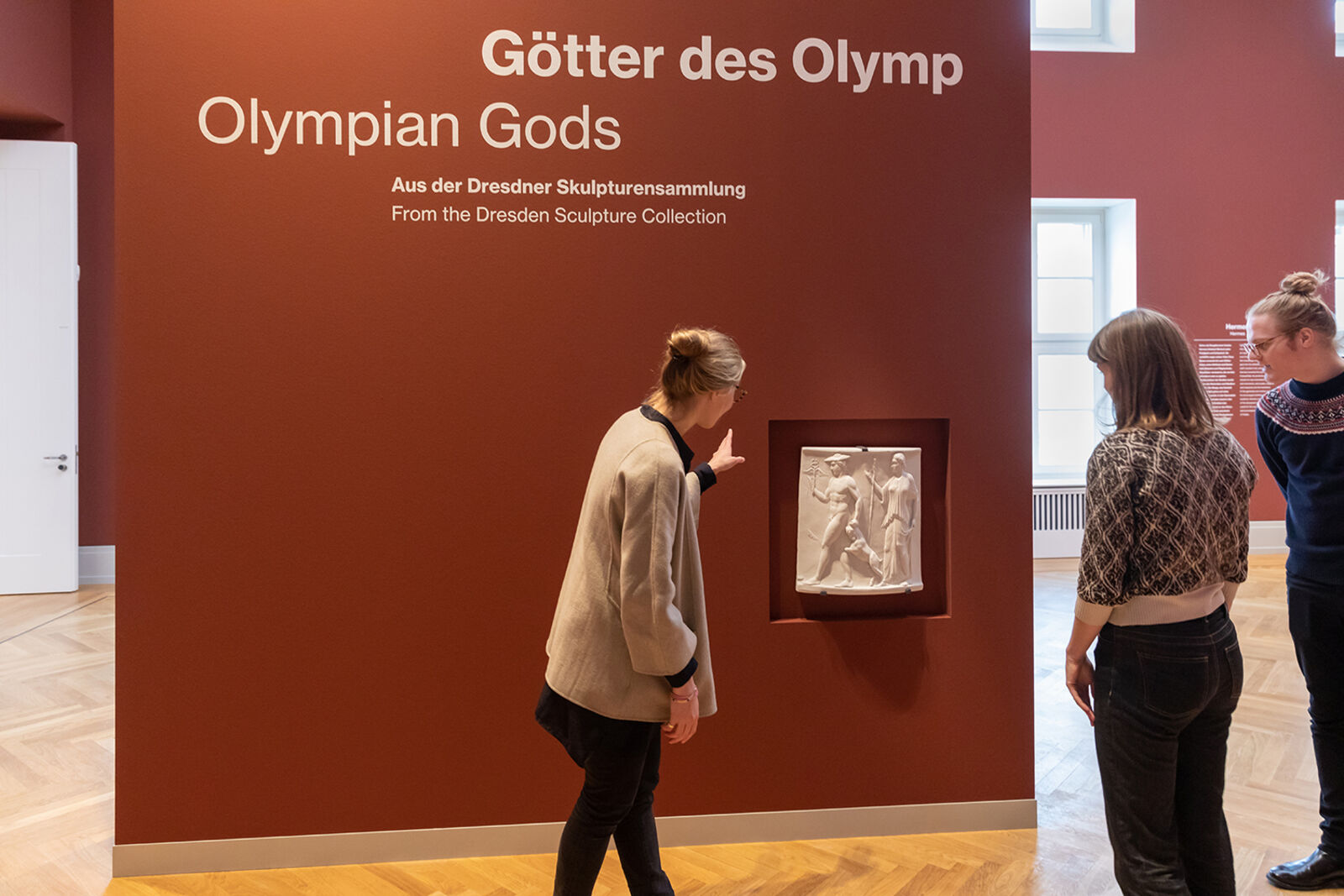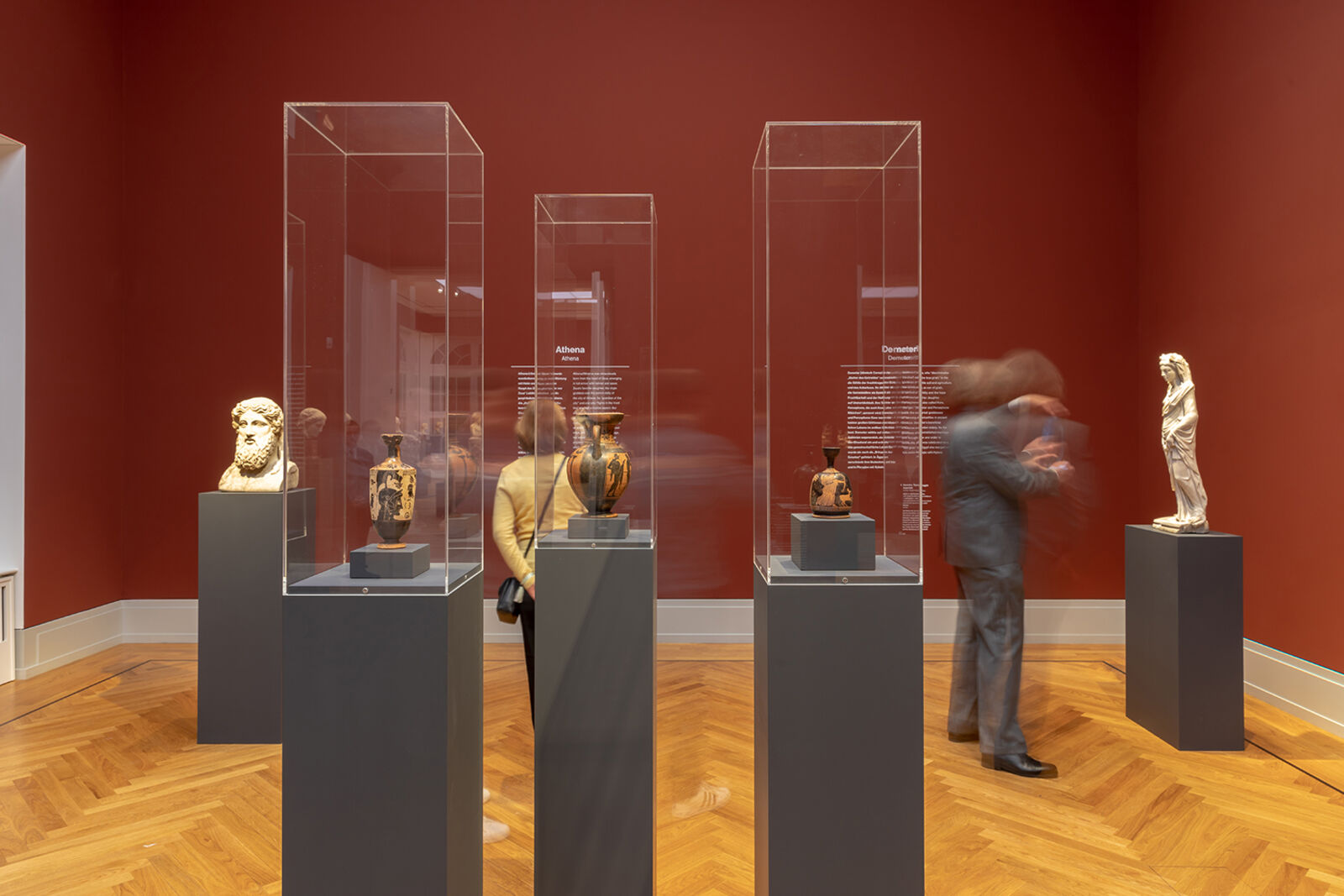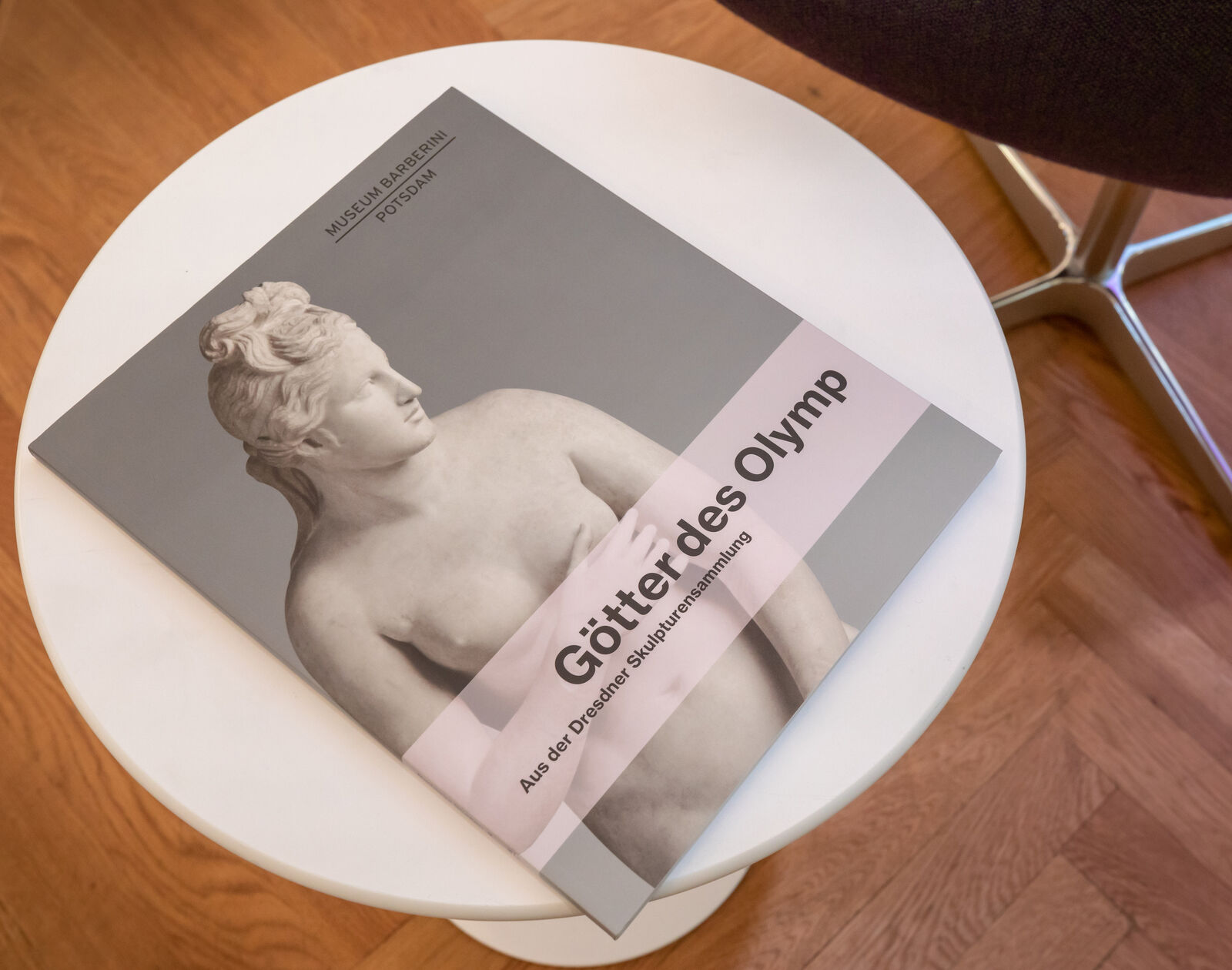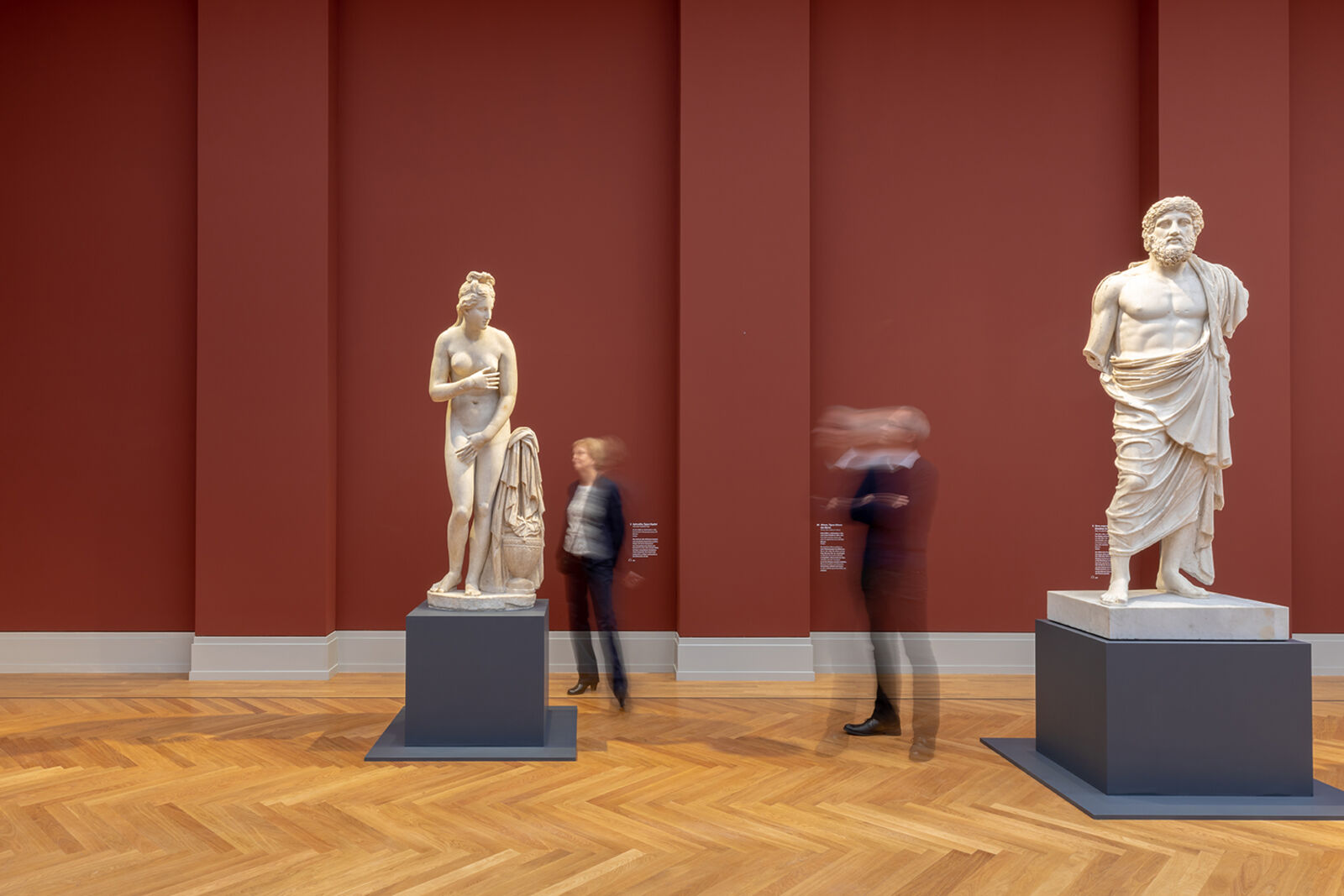
Olympian Gods: From the Dresden Sculpture Collection
The Museum Barberini presented forty-five works from the Dresden collection of antiquities, including masterpieces such as the Dresden Zeus and the statue of Athena Lemnia.
For the ancient Greeks, imposing statues signified the presence of the gods and symbolized power and ideal beauty. During the Roman Empire, sculptors copied Greek models that conveyed an aura of education and scholarship. To this day, these works continue to express grandeur and charm.
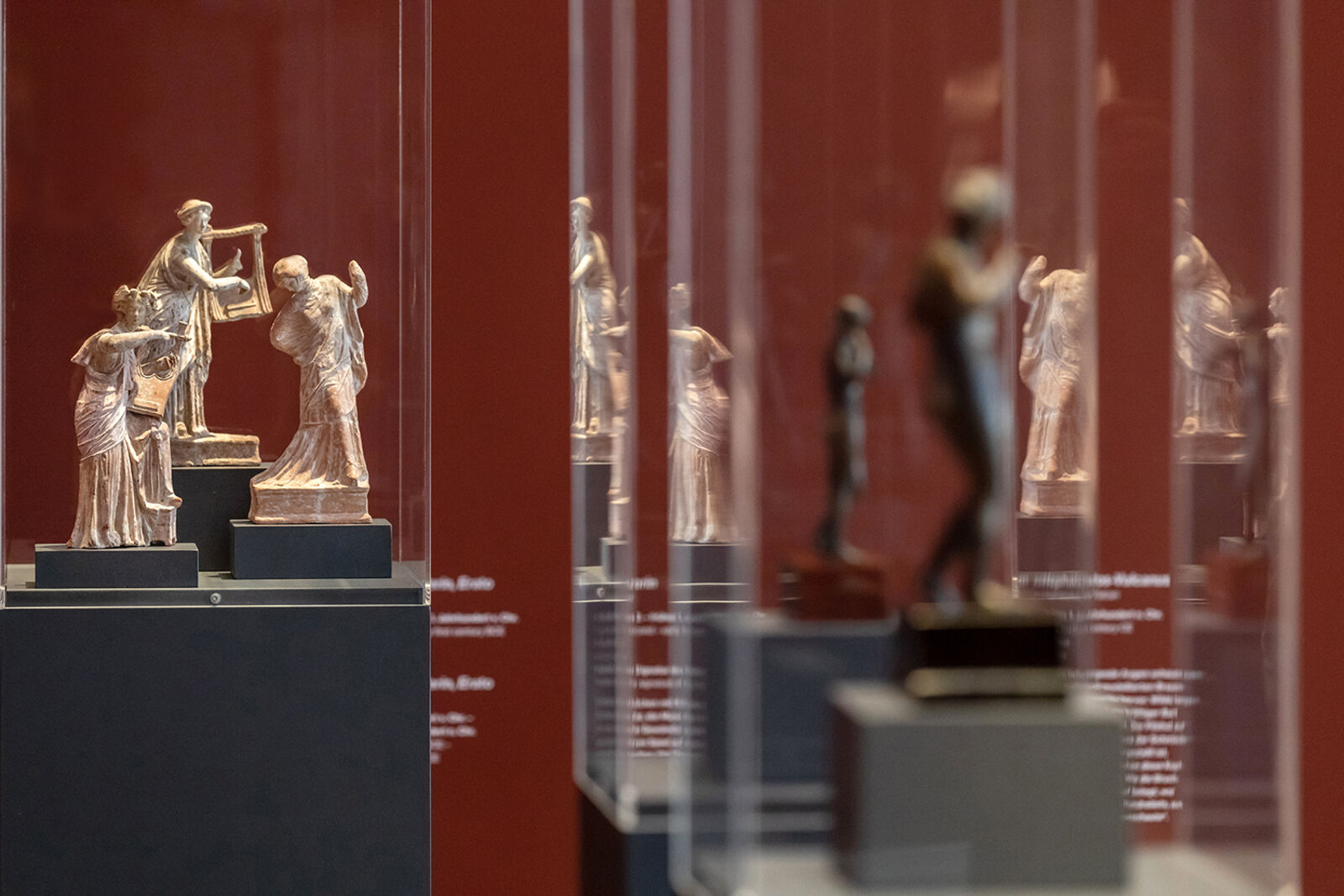
Helge Mundt
“August the Strong, Elector of Saxony, King of Poland and Grand Duke of Lithuania, founded the Dresden Sculpture Collection, and together with the gods he gathered the heroes and paragons of virtue at court. He received the bust of Ares and the Hermes Herb as a gift from the King in Prussia, Frederick William I. After almost 300 years, these works find their way back to Potsdam before they will find their permanent home in the renovated Semper Building in Dresden.”
One of the most important collections of ancient sculptures in Germany is held by the Staatliche Kunstsammlungen Dresden. The Museum Barberini presented works from this collection representing the most important gods of Olympus, including statues that are so well-known that they have been named after their location, such as the Dresden Zeus. These masterpieces exemplify the evolution of Greek sculpture and illustrate the stories of classical mythology. An exhibition of the Museum Barberini, Potsdam, in cooperation with the Staatliche Kunstsammlungen Dresden.
Retrospect
The exhibition at the Museum Barberini brought together ancient masterpieces from the Skulpturensammlung in Dresden, pieces that could not be displayed there due to the renovation of the Staatliche Kunstsammlungen in Dresden.
